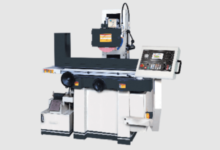What Makes a Personalization Engine Truly Effective?

Today, personalization isn’t just a nice-to-have; it’s essential. Consumers expect experiences that feel tailored just for them, at the exact moment it matters. A successful personalization engine meets that expectation, seamlessly, consistently, and at scale. It’s the difference between capturing someone’s interest and losing them.
But what does it mean to have an advanced personalization engine? Sure, a tool might claim to be “smart,” but truly effective ones go beyond static logic or basic A/B testing. They adapt in real-time, utilize rich data, and are intuitive enough for teams to harness without needing to jump through technical hoops. This blog will explore what makes such engines tick and why every business should care.
What Is a Personalization Engine, and Why Does It Matter?
A personalization engine is a smart technology platform that adapts user experiences on the fly. It collects user signals, such as browsing history, purchase behavior, or scrolling habits, and transforms them into meaningful recommendations, content, or offers that feel relevant and timely.
Suppose walking into a store where the layout rearranges itself to show you what you’re most likely to buy next. That’s the promise of a top-notch personalization engine: delivering relevancy instantly, across all channels. When done well, it doesn’t just enhance satisfaction, it boosts engagement, conversion rates, and loyalty.
Core Attributes That Drive Effectiveness
Effective personalization engines excel by leveraging powerful data, AI, and seamless integration to deliver personalized experiences in real time. They continuously optimize user engagement across channels, ensuring relevance and timeliness.
Here are the key attributes that contribute to their success:
- Data Power: From Collection to Real-Time Insights
An effective engine excels at tapping into diverse data points, including user clicks, time spent, past purchases, location, and preferences. But what truly sets it apart is processing that data right when it matters:
- Real-time analysis ensures recommendations evolve with user behavior instantly.
- Cross-channel consistency ensures the experience remains unified, regardless of whether a user interacts via web, app, or email.
- Dynamic adaptability, where the system learns mid-session and adjusts offers instantly.
When this happens, user experience feels not just personalized, but intuitively responsive.
- Seamless Integration and Scalability
What good is a powerful engine if it lives in a silo? A truly effective engine:
- Connects easily with CRMs, CMS, analytics tools, and marketing stacks.
- Scales effortlessly, handling growing traffic, expanding markets, and evolving product lines.
- Fits seamlessly into existing workflows, making adoption smoother for teams across the organization.
Integration and scalability are non-negotiable, especially for fast-growing brands.
What Sets Top Engines Apart?
Let’s unpack the key criteria that distinguish a basic tool from a high-impact personalization engine:
- AI & Machine Learning at the Core
Anyone can perform rule-based personalization, such as showing a coupon after a cart abandonment, for example. A real game-changer uses AI to:
- Predict needs before users explicitly express them.
- Move beyond one-variable tests to multi-dimensional optimization.
- Tailor not just content, but layout, timing, pricing, and incentives—all at once.
This depth of intelligence transforms personalization from a reactive to a proactive approach.
- Omnichannel and Multifeature Support
Users don’t exist in silos. A truly effective engine ensures:
- Delivery across web, mobile, email, and more.
- Consistent messaging, look and feel, and UX across each touchpoint.
- Modular UI options like overlays, tailored landing pages, and in-the-moment widgets all deployable quickly and flexibly.
This cohesion strengthens brand perception and prevents jarring shifts between channels.
- Ease of Use and Strong Support
High-level tools often bring complexity. But the best engines balance power with simplicity:
- Intuitive interfaces that let marketers or product folks design and launch experiences without engineering help.
- Visual builders or templates that empower fast iteration.
- Dedicated support, onboarding, and documentation that help teams learn and scale strategies quickly.
An engine’s usability is just as critical as its underlying tech.
Deep-Dive Into Key Effectiveness Categories
To truly understand what makes a personalization engine effective, it’s essential to dive into the core categories that drive performance. These categories highlight the most critical features and attributes that set high-performing engines apart from the rest.
Here are the key areas to consider:
- Scalability & Integration
- Easily connects to CRMs, CMS systems, and analytics stacks.
- Accommodates more users and channels without performance drops.
- Supports unified workflows so data flows smoothly across systems.
When an engine plugs in cleanly and grows with you, there’s no stopping your personalization evolution.
- AI & Machine Learning Precision
- Learns from real-time behavioral patterns, not just historical snapshots.
- Executes prediction, segmentation, and optimization continuously.
- Offers deeper personalization, from product bundling to timing nudges.
AI moves personalization from “good guess” to laser-focused relevance.
- Omnichannel Delivery
Supports consistency across:
- Web platforms (native UI, embedded overlays, full-page).
- Mobile and app environments.
- Email and external touchpoints, such as social media or messaging.
Consistency maintains user trust and keeps a smooth experience front and center.
4. Simplicity and Support
- Visual interfaces reduce reliance on development.
- Templates, brand kits, and modular components streamline execution.
- Education, onboarding, and help resources reduce friction for teams.
Adoption speed and ease directly affect the ROI of personalization efforts.
What Questions Should Marketers Ask?
Here’s a quick list to guide evaluation, think of it as your go/no-go checklist:
- Does the engine support real-time, multi-variable decisioning?
- Can it deliver across all relevant channels, web, email, app, and beyond?
- Does it auto-segment and personalize dynamically, or rely on static rules?
- Is there a visual builder or templates for easy setup without dev cycles?
- Will it scale and integrate with your existing marketing technology (martech) stack?
- How robust is the support and onboarding help available when you need it?
Answering “yes” to these questions typically signals a strong, business-impacting engine.
Benefits in Action: What Teams Gain
Let’s visualize what happens when you choose an engine with all these traits:
- Higher conversions per click: Every visitor sees messaging that resonates instantly.
- Reduced reliance on dev cycles: Marketers or PMs can launch and test experiences themselves.
- Faster iteration and optimization: Real-time data means faster insight loops—not waiting weeks for results.
- Future-proof UX: The personalization engine evolves with user behavior, channels, and market changes.
When your engine is smart, flexible, and easy to use, it creates a compounding advantage that pays off exponentially.
Conclusion
An effective personalization engine goes beyond basic customization; it continuously adapts to user behavior, delivering real-time, relevant experiences at scale. By harnessing the power of AI, seamless integrations, and user-friendly interfaces, businesses can optimize every touchpoint, from initial engagement to long-term loyalty.
The key lies in choosing a solution that not only meets today’s demands but also evolves with future consumer expectations. Investing in the right engine empowers teams to create personalized journeys effortlessly, boosting conversions, engagement, and retention. With the right tools, the possibilities for growth and innovation are limitless.







